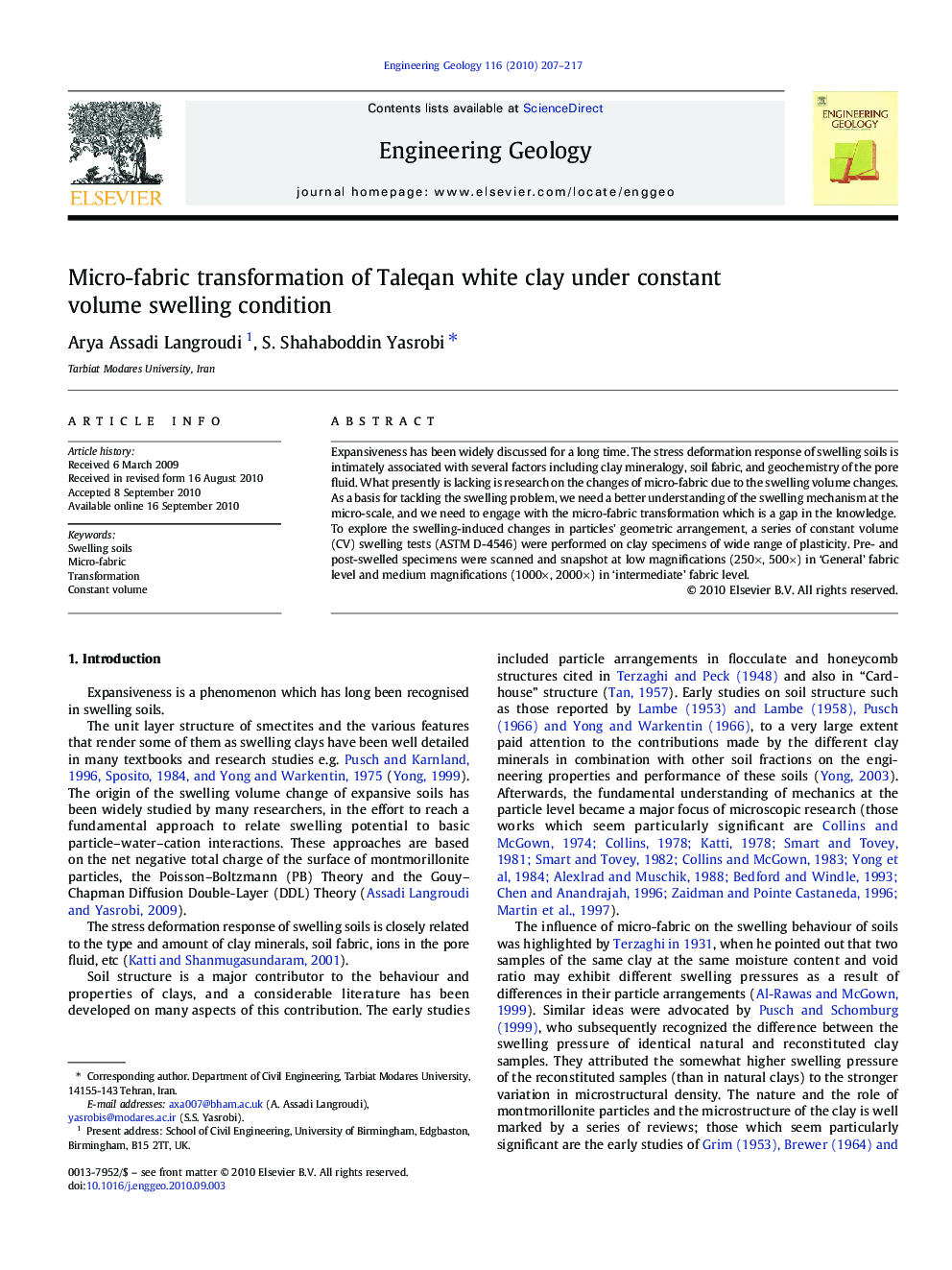| Article ID | Journal | Published Year | Pages | File Type |
|---|---|---|---|---|
| 4744375 | Engineering Geology | 2010 | 11 Pages |
Expansiveness has been widely discussed for a long time. The stress deformation response of swelling soils is intimately associated with several factors including clay mineralogy, soil fabric, and geochemistry of the pore fluid. What presently is lacking is research on the changes of micro-fabric due to the swelling volume changes. As a basis for tackling the swelling problem, we need a better understanding of the swelling mechanism at the micro-scale, and we need to engage with the micro-fabric transformation which is a gap in the knowledge.To explore the swelling-induced changes in particles' geometric arrangement, a series of constant volume (CV) swelling tests (ASTM D-4546) were performed on clay specimens of wide range of plasticity. Pre- and post-swelled specimens were scanned and snapshot at low magnifications (250×, 500×) in ‘General’ fabric level and medium magnifications (1000×, 2000×) in ‘intermediate’ fabric level.
Research Highlights► Microfabric at post-saturation state stages strong aggregation. Aggregation occurs in clays of about 30% to 60% plasticity, and 60% to 80% liquid limit, irrespective of their initial density and initial moisture content. ► Inter-assemblage pore spaces increase after CV saturation in specimens prepared at dry-of-optimum compaction state. ► Inter-assemblage and intra-assemblage pore spaces decrease after CV saturation in specimens prepared at wet-of-optimum compaction state. ► Intra-assemblage pore spaces decrease after CV saturation in specimens of lower plasticity. ► Swelling-induced microfabric changes occur mostly at elementary particle level for soils of higher plasticity.
